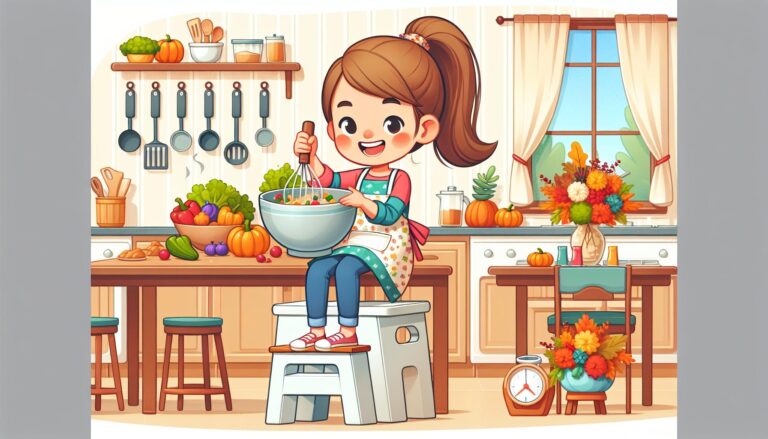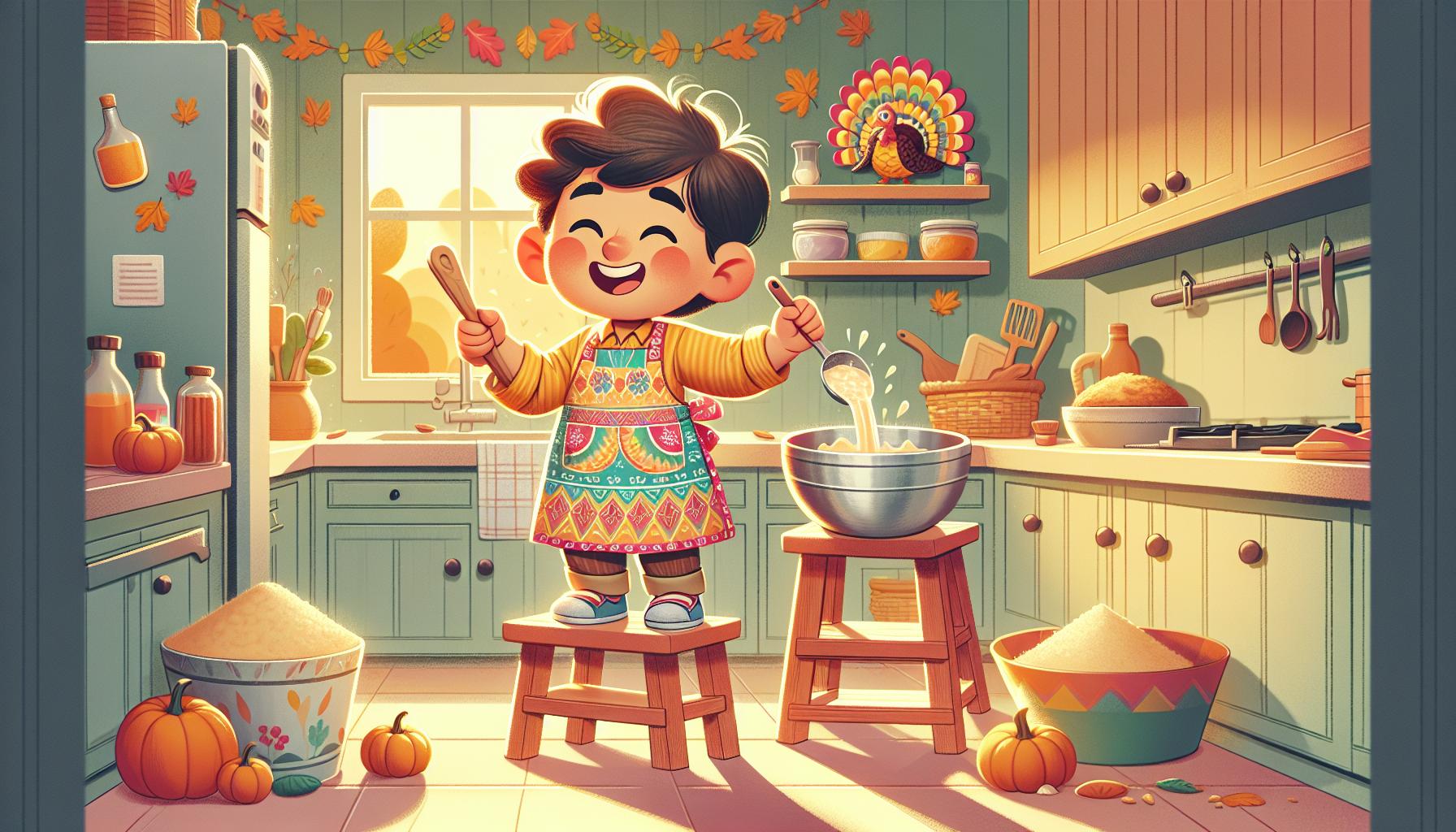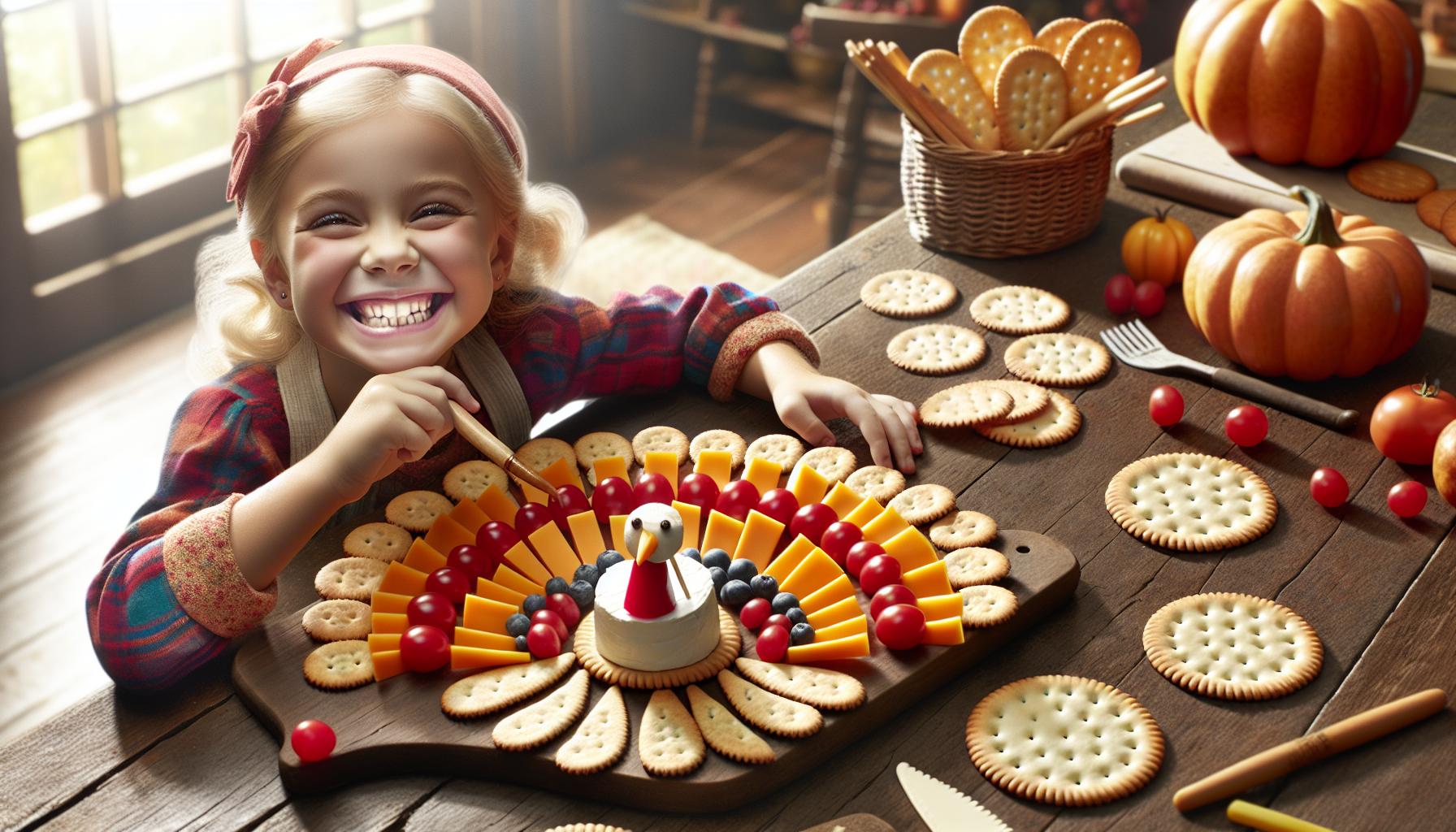
Getting kids involved in Thanksgiving meal prep creates lasting memories and teaches valuable life skills. We know how much children love hands-on activities and what better way to channel their energy than through fun holiday cooking? From simple sides to easy desserts there’s something for every young chef to contribute.
We’ve gathered child-friendly recipes that’ll make your little ones feel like kitchen superstars while keeping safety in mind. These dishes are perfect for small hands and growing minds with steps that kids can handle confidently. Plus they’ll beam with pride when family members enjoy their culinary creations at the Thanksgiving table.
Key Takeaways
- Cooking with kids during Thanksgiving builds valuable life skills, creates lasting memories, and strengthens family bonds
- Children of different ages can participate safely in meal prep, from simple tasks for toddlers (like pouring ingredients) to more complex responsibilities for older kids (such as using supervised knife skills)
- Kid-friendly recipes include easy appetizers (turkey-shaped platters), simple sides (mashed potatoes), and no-bake desserts (decorated cookies) that allow children to contribute meaningfully to the feast
- The kitchen becomes a learning laboratory where kids develop math skills through measuring, science understanding through cooking processes, and confidence through hands-on experience
- Safety guidelines and age-appropriate tools are essential for creating a positive cooking experience, including proper supervision, child-sized equipment, and clear workspace organization
Why Cooking With Kids Matters on Thanksgiving
Cooking with kids on Thanksgiving creates meaningful family connections through hands-on experiences in the kitchen. Children who participate in meal preparation develop confidence in their abilities while learning essential cooking skills.
The kitchen transforms into a learning space where kids:
- Master basic math through measuring ingredients
- Practice following step-by-step instructions
- Learn kitchen safety rules
- Develop fine motor skills while mixing stirring or decorating
- Experience scientific concepts like temperature changes
Family traditions take root when children participate in Thanksgiving preparations. Kids gain appreciation for:
- Family recipes passed down through generations
- The effort involved in preparing holiday meals
- Cultural food traditions
- Teamwork required for large gatherings
The sense of accomplishment kids feel shapes their relationship with food and cooking. Research from the Journal of Nutrition Education and Behavior shows children who cook:
- Make healthier food choices
- Show increased interest in trying new foods
- Display better communication skills
- Express higher levels of self-confidence
Here’s how cooking benefits kids at different ages:
| Age Group | Benefits |
|---|---|
| 3-5 years | Sensory development through touching ingredients |
| 6-8 years | Reading recipe instructions builds literacy |
| 9-12 years | Math skills through measurement conversions |
| Teens | Time management planning multiple dishes |
Getting kids involved early creates lasting memories they’ll carry into adulthood. What favorite Thanksgiving dishes would your children love helping prepare this year?
Safety Guidelines for Cooking With Children

Cooking with children creates memorable holiday moments when proper safety measures guide the kitchen experience. Here’s how to keep young chefs safe while making Thanksgiving dishes.
Age-Appropriate Kitchen Tasks
The kitchen offers different responsibilities based on age and skill level:
Ages 2-3:
- Pour pre-measured ingredients into bowls
- Wash fruits and vegetables in a colander
- Mix ingredients with wooden spoons
- Help with simple cleanup tasks
Ages 4-6:
- Roll dough with supervision
- Measure dry ingredients
- Break eggs into a separate bowl
- Stir room temperature ingredients
Ages 7-10:
- Use a butter knife for soft ingredients
- Operate a hand mixer
- Follow simple recipes independently
- Grease baking pans
Ages 11+:
- Chop vegetables with proper knife skills
- Use the oven with supervision
- Read and execute complex recipes
- Help with meal planning
Essential Kitchen Tools for Kids
Safe kitchen tools empower children to participate effectively:
Basic Safety Equipment:
- Non-slip step stools
- Child-sized oven mitts
- Cut-resistant gloves
- Plastic cutting boards
Kid-Friendly Utensils:
- Nylon knives for beginners
- Silicone spatulas
- Large mixing bowls
- Measuring cups with handles
- Tools with rounded edges
- Non-breakable materials
- Textured grip handles
- Easy-clean surfaces
- Aprons with proper fit
- Hair ties or caps
- Timer with large display
- Clear storage containers
Easy Appetizers Kids Can Prepare

Kids create fun appetizers that kickstart the Thanksgiving feast with these simple yet impressive recipes. Each appetizer combines creativity with basic kitchen skills, making them perfect for young chefs.
Turkey-Shaped Cheese Platters
Creating turkey-shaped cheese platters lets kids express their artistic side while practicing fine motor skills. Place crackers in a fan pattern to form tail feathers, arrange cheese slices for the body, and add grape tomatoes for the head. Kids can:
- Sort crackers by size and shape for the tail display
- Layer different cheese varieties in rows
- Position small vegetables like cherry tomatoes or cucumber slices
- Add rolled deli meats for extra decoration
- Place small bowls of nuts or dried fruits as accent pieces
- Filling cups with 2-3 tablespoons of ranch dressing
- Standing celery sticks vertically as tail feathers
- Adding baby carrots in a fan pattern
- Placing cherry tomatoes for the turkey’s head
- Dotting with small pieces of black olives for eyes
- Creating a small triangle beak from yellow bell pepper
| Ingredient | Amount per Cup | Total for 12 Cups |
|---|---|---|
| Ranch Dressing | 2-3 tbsp | 1½ cups |
| Celery Sticks | 3 pieces | 36 pieces |
| Baby Carrots | 4-5 pieces | 60 pieces |
| Cherry Tomatoes | 1 piece | 12 pieces |
| Black Olives | 2 small pieces | 24 pieces |
| Yellow Pepper | 1 small triangle | 1 small pepper |
Kid-Friendly Side Dish Recipes
Side dishes create perfect opportunities for kids to participate in Thanksgiving meal preparation. These recipes focus on simple techniques that children can master with adult supervision.
Mashed Potato Station
Kids excel at creating fluffy mashed potatoes through hands-on participation. Young chefs ages 4+ can help wash potatoes while older kids measure milk butter. Set up stations where kids:
- Peel cooked potatoes using a child-safe peeler
- Mash potatoes with a potato masher or ricer
- Add pre-measured ingredients like butter milk salt
- Stir ingredients together until smooth
- Taste test for seasoning adjustments
- Transfer to serving bowls garnish with herbs
Green Bean Assembly Line
The green bean casserole assembly process breaks down into manageable steps for kids. Create defined workstations where children:
- Snap ends off fresh green beans
- Layer beans in the casserole dish
- Pour cream of mushroom soup
- Sprinkle crispy onions on top
- Add cheese toppings evenly
- Monitor cooking time with timer
Safety tips for both stations:
| Age Group | Approved Tasks |
|---|---|
| Ages 3-5 | Washing ingredients stirring mixing |
| Ages 6-8 | Measuring ingredients basic assembly |
| Ages 9+ | Peeling mashing seasoning |
Children maintain ownership of their dish when they help measure combine assemble ingredients. Adult supervision remains essential for tasks involving heat sharp tools or heavy items.
Fun Dessert Projects for Little Helpers
Desserts offer an exciting opportunity for kids to showcase their creativity in the kitchen. Here’s how young bakers can contribute to the Thanksgiving dessert table with minimal supervision.
No-Bake Thanksgiving Treats
Kids create festive treats without using the oven through these simple recipes:
- Mix crispy rice cereal with melted marshmallows to form turkey-shaped treats
- Stack chocolate sandwich cookies with peanut butter to make pilgrim hat cookies
- Roll crushed graham crackers with cream cheese for pumpkin-shaped cake pops
- Layer pudding cups with crushed cookies for dirt cup harvest gardens
- Dip pretzel rods in chocolate to create decorated harvest corn stalks
Safety tips for no-bake treats:
- Adult supervision for melting ingredients
- Hand washing before food handling
- Clean workspace maintenance
- Safe food storage practices
Cookie Decorating Activities
Cookie decorating transforms basic sugar cookies into personalized Thanksgiving art pieces:
Essential supplies:
- Pre-baked sugar cookies in fall shapes
- Squeeze bottles filled with colored icing
- Sprinkles in autumn colors
- Small containers for toppings
- Plastic knives for spreading
Kid-friendly decorating techniques:
- Spread base icing with plastic knives
- Add details with squeeze bottle tips
- Sprinkle toppings in designated areas
- Create patterns with multiple colors
- Stack decorations for 3D effects
- Cover tables with disposable cloths
- Separate decorating stations by cookie type
- Place paper towels at each station
- Keep wet wipes nearby for clean-up
- Store finished cookies in single layers
Tips for Making Cooking Fun and Educational
Transform cooking into an engaging learning experience with these interactive approaches:
- Create Counting Games
- Count ingredients together (10 marshmallows for sweet potatoes)
- Measure ingredients using different measuring cups
- Sort ingredients by color or size
- Practice Math Skills
- Double or halve recipe amounts
- Add fractions while measuring ingredients
- Calculate cooking times
- Incorporate Science Lessons
- Observe how ingredients change when mixed
- Watch dough rise with yeast
- Explain temperature effects on food
- Develop Language Skills
- Read recipes aloud together
- Learn new cooking vocabulary
- Name ingredients in different languages
- Include Movement Activities
- Dance while waiting for dishes to cook
- Create kitchen-safe obstacle courses
- Demonstrate proper stirring techniques
- Add Sensory Exploration
- Feel different ingredient textures
- Identify spices by smell
- Listen to cooking sounds
- Turn Tasks into Challenges
- Set up timed activities
- Create assembly line stations
- Host mini cooking competitions
- Include Art Elements
- Design place cards while dishes bake
- Create food presentations
- Draw recipe illustrations
- Add Musical Elements
- Sing cooking-themed songs
- Tap out measuring rhythms
- Create kitchen instrument bands
- Incorporate History
- Share family recipe stories
- Discuss ingredient origins
- Learn about traditional cooking methods
Remember to praise effort over results and celebrate creativity in the kitchen. How do you plan to make your Thanksgiving cooking session educational for your little chefs?
Conclusion
Creating Thanksgiving memories in the kitchen with our children goes far beyond just preparing a meal. We’ve seen how these cooking activities can transform into valuable learning experiences that build confidence teach life skills and strengthen family bonds.
By involving kids in our Thanksgiving preparations we’re not just making dishes – we’re creating traditions that will stay with them for years to come. Whether they’re decorating cookies crafting creative appetizers or helping with simple tasks these activities lay the foundation for a lifetime of cooking enjoyment and family togetherness.
Let’s embrace the mess the giggles and the pride in our young chefs’ eyes as they contribute to our family’s Thanksgiving feast. After all it’s these precious moments that make the holiday truly special.
Frequently Asked Questions
At what age can children start helping with Thanksgiving meal preparation?
Children can start helping as early as age 2-3 with simple tasks like washing vegetables or stirring ingredients. Toddlers can assist with basic activities under close supervision, while older children can take on more complex tasks. The key is assigning age-appropriate responsibilities that match their developmental abilities.
What are some safe kitchen tasks for young children?
Safe tasks include mixing dry ingredients, tearing lettuce, washing fruits and vegetables, arranging cheese platters, decorating cookies, and measuring ingredients. Young children can also help with setting the table, folding napkins, and making simple no-bake desserts. Always supervise and avoid tasks involving sharp objects or heat.
How does cooking benefit child development?
Cooking helps develop math skills through measuring, science understanding through observing food changes, fine motor skills through mixing and pouring, and reading comprehension through following recipes. It also builds confidence, encourages creativity, teaches patience, and improves communication skills while fostering family connections.
What safety precautions should be taken when cooking with kids?
Essential safety measures include proper hand washing, using age-appropriate tools, supervising heat-related tasks, teaching knife safety, wearing appropriate clothing, and keeping workspace clean. Establish clear rules about kitchen safety, demonstrate proper techniques, and ensure children understand basic food safety principles.
How can I make cooking fun and educational for children?
Turn cooking into games by counting ingredients, measuring mathematics, exploring food science, and incorporating music and movement. Create challenges like assembling creative appetizers, use themed cookie cutters, and encourage recipe modifications. Make it interactive by telling family stories and discussing cultural traditions while cooking.
What kid-friendly tools should I have in the kitchen?
Stock your kitchen with plastic mixing bowls, child-sized aprons, plastic measuring cups and spoons, non-sharp spreaders, silicon spatulas, and step stools. Consider purchasing colorful, durable utensils designed specifically for children, along with easy-grip tools and non-breakable mixing bowls.
How can children help with Thanksgiving desserts?
Children can assist with no-bake desserts like turkey-shaped rice treats, decorated cookies, and simple fruit arrangements. They can mix ingredients, roll dough, use cookie cutters, and add decorative touches. Supervise any tasks involving heat or sharp objects, and let them express creativity in decorating.
What are signs that a child is ready for more complex cooking tasks?
Look for demonstrated responsibility with basic tasks, understanding of kitchen safety rules, good listening skills, and physical coordination. Children should show patience, follow multi-step instructions, and handle simple tools properly before progressing to more complex cooking activities.

